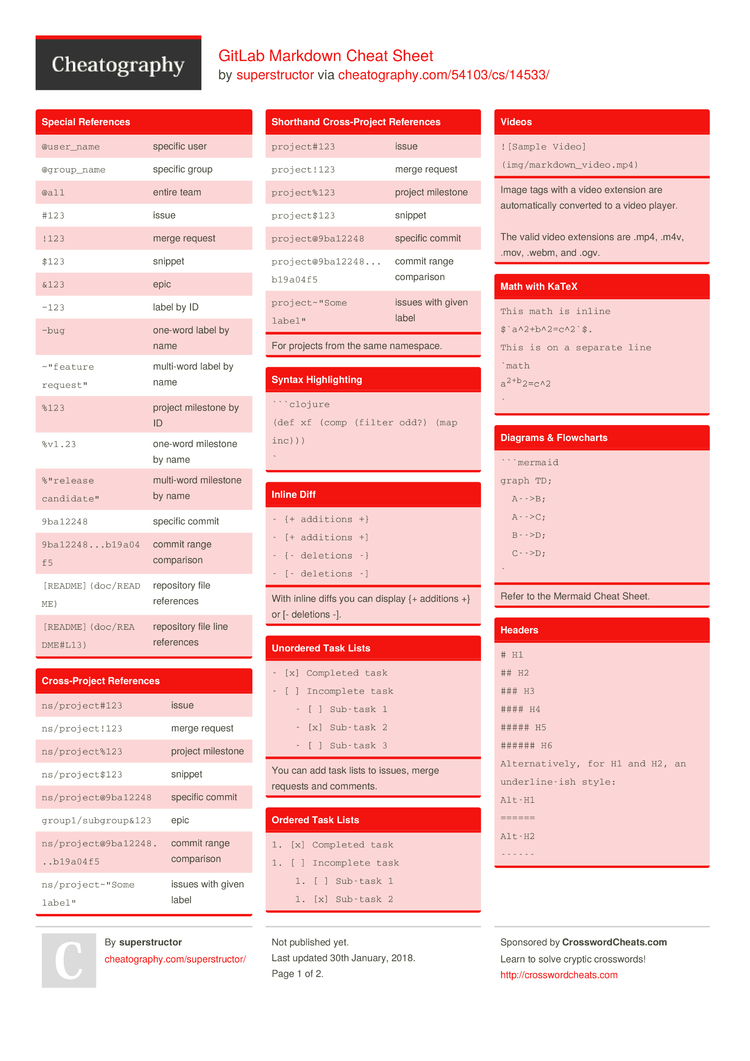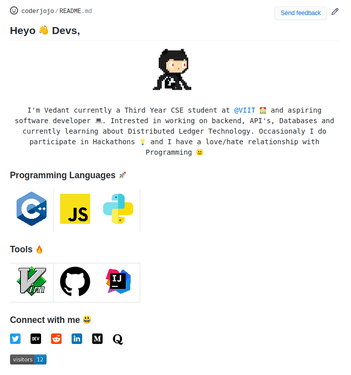Markdown
Markdown cheatsheet Markdown is a simple way to format text that looks great on any device. It doesn’t do anything fancy like change the font size, color, or type — just the essentials, using keyboard symbols you already know. Telegram has its own version of markdown. Markdown cheat sheet Markdown is an easy-to-read, easy-to-write syntax for formatting plain text into HTML code. It is commonly used to write README.md files in online Git repositories such as Github. A good cheat sheet can be found here. In a Markdown file or widget, enter two spaces before the line break to begin a new paragraph, or enter two consecutive line breaks to begin a new paragraph. Example - pull request comment: Add lines between your text with the Enter key. This spaces your text better and makes it easier to read. Markdown is a lightweight markup language with plain-text-formatting syntax. It was created in 2004. Markdown, also referred to simply as md, are often used in readme files for writing messages on online-discussion forums and to create rich text in simple texteditors. I prefer to use Markdown for basically everything I can, from writing a personal blog, tech articles and even my resume. There are only a few syntaxes that I most commonly use. This post is intended for those who are new to Markdown or need a refresh on its syntax. Heading and List # symbol is used for creating a heading.


Markdown Cheat Sheet 2.0
Paragraphs
Separate paragraphs with a blank line.
Start each heading with one or more hashes, followed by a space.
*— ItalicWrap the words in single asterisks.
Wrap the words in double asterisks.
-— Unordered listStart each line with a dash and a space.
Indent before the dash for nested lists.
Start each line with a number, period & space.
Indent before the number for nested lists.
[]()— Link[]— link text inside square brackets.()— link URL inside round brackets.
Start with an exclamation point.
[]— alt text inside square brackets.()— image URL inside round brackets.
---— Horizontal ruleThree consecutive dashes on a single line.
Surround code inside other text with single backticks.
```— Code blockStart a line with three backticks to make a code block.
End the code block with three more backticks on their own line.
Optionally specify the code language after the opening backticks.
Non standard. Start a list and used square brackets with a space to denote a task.
Put an “x” between the square brackets to mark it as complete.
YAML

Always indent with two spaces.
Markdown Cheatsheet Pdf
Start with a term, no spaces, followed by a colon and a space.
Indent to create nested objects.
- value— ArraysStart with a dash, and a space.
Arrays inside objects:
Objects inside arrays.
Surround text with quotes (double or single) to escape text.
In all the previous examples the quotes aren’t really necessary. But I find myself almost always adding them for clarity and to prevent myself from having to think about whether I need to escape the or not.
>— Folded text blockStart with a greater than, and indent the next lines.
The text will be collapsed into a single line when parsed.
Start with a vertical pipe, and indent the next lines.
The text will keep its multiple lines when parsed.
---— Front matterYAML can be used at the top of Markdown documents to add more structured data.
Surround the YAML with two lines of consecutive dashes.
